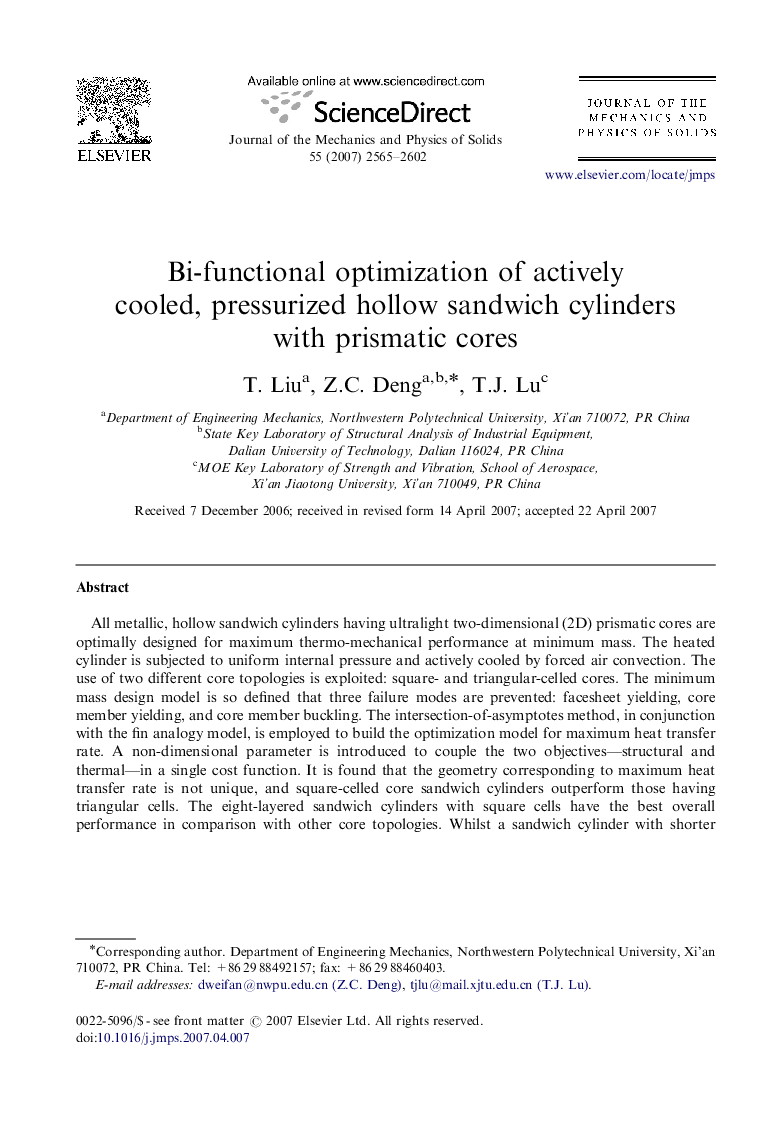| Article ID | Journal | Published Year | Pages | File Type |
|---|---|---|---|---|
| 797444 | Journal of the Mechanics and Physics of Solids | 2007 | 38 Pages |
All metallic, hollow sandwich cylinders having ultralight two-dimensional (2D) prismatic cores are optimally designed for maximum thermo-mechanical performance at minimum mass. The heated cylinder is subjected to uniform internal pressure and actively cooled by forced air convection. The use of two different core topologies is exploited: square- and triangular-celled cores. The minimum mass design model is so defined that three failure modes are prevented: facesheet yielding, core member yielding, and core member buckling. The intersection-of-asymptotes method, in conjunction with the fin analogy model, is employed to build the optimization model for maximum heat transfer rate. A non-dimensional parameter is introduced to couple the two objectives—structural and thermal—in a single cost function. It is found that the geometry corresponding to maximum heat transfer rate is not unique, and square-celled core sandwich cylinders outperform those having triangular cells. The eight-layered sandwich cylinders with square cells have the best overall performance in comparison with other core topologies. Whilst a sandwich cylinder with shorter length is preferred for enhanced thermo-mechanical performance, the influence of the outer radius of the cylinder is rather weak.
